The Lupanar of Pompeii stands as one of the most intriguing relics of the ancient world, providing a unique glimpse into the private lives of its inhabitants.
Situated in the once bustling city of Pompeii, the Lupanar is renowned as the largest brothel in the city. This is evidenced by the explicit frescoes and inscriptions that adorn its walls. Its architecture reveals much about Roman society’s attitudes toward sexuality and the commodification of pleasure.

As an emblem of the economic and social structures of Pompeii, the structure of the Lupanar offers insight into the ancient city’s day-to-day life. The preserved rooms and artifacts found within its confines suggest transactions that were not solely sexual but echoed the complex interrelations of commerce and daily life in Pompeii before it was buried under the ash of Mount Vesuvius in 79 AD. With its discovery, the Lupanar became a focal point for discussions on the public and private spheres of antiquity, illuminating the commonly held beliefs and cultural norms of its time.
Key Takeaways
- The Lupanar is a testament to Pompeii’s societal norms and the significance of sexuality in ancient Roman culture.
- Architectural and artefactual evidence from the site contributes to understanding Pompeii’s economic and social dynamics.
- Ongoing discussions about the Lupanar’s preservation add depth to our perception of its historical and modern-day relevance.
Historical Context
The Lupanar of Pompeii provides a vivid glimpse into the sexual mores of Ancient Rome, serving as an essential artifact for understanding the social and economic aspects of Roman life before the catastrophic eruption of Mount Vesuvius.
Pompeii and the Lupanar
Pompeii, a thriving Roman colony in Campania, Italy, was entombed under volcanic ash in 79 CE after Mount Vesuvius erupted. Among the city’s well-preserved ruins is the Lupanar, located in the Regio V district on Vicolo del Lupanare. This brothel, considered the most famous of such establishments in Pompeii, illuminates the ubiquity of prostitution in Roman cities. Its erotic frescoes and inscriptions provide direct insights into the activities within.
Nearby, other significant edifices like the luxurious House of the Vetti and the stately Basilica contrast with the Lupanar, highlighting the disparity between private residences and public pleasure spaces. Furthermore, similar to other disaster-stricken areas like Herculaneum, the Lupanar’s remains contribute to a wider understanding of Roman urban design and social practices.
Ancient Rome and Prostitution
In Ancient Rome, prostitution was legal, taxed, and recognized as a profession. Brothels, or lupanara, were distinct quarters in many Roman cities, frequented by a clientele from various social classes. The term ‘lupa,’ an etymon for a prostitute, likens these women to she-wolves, providing a sense of the visceral and primal nature associated with such establishments.
Prostitution in Roman society extended beyond the physical brothels; it permeated the social fabric as a tolerated, albeit marginalized, occupation. In cities like Pompeii, these activities not only occurred within the precincts of the brothels but also in spaces such as taverns and inns. The presence of these services in a diverse array of locales across Italy underscores their integral role in Ancient Roman daily life.
Architecture and Structure
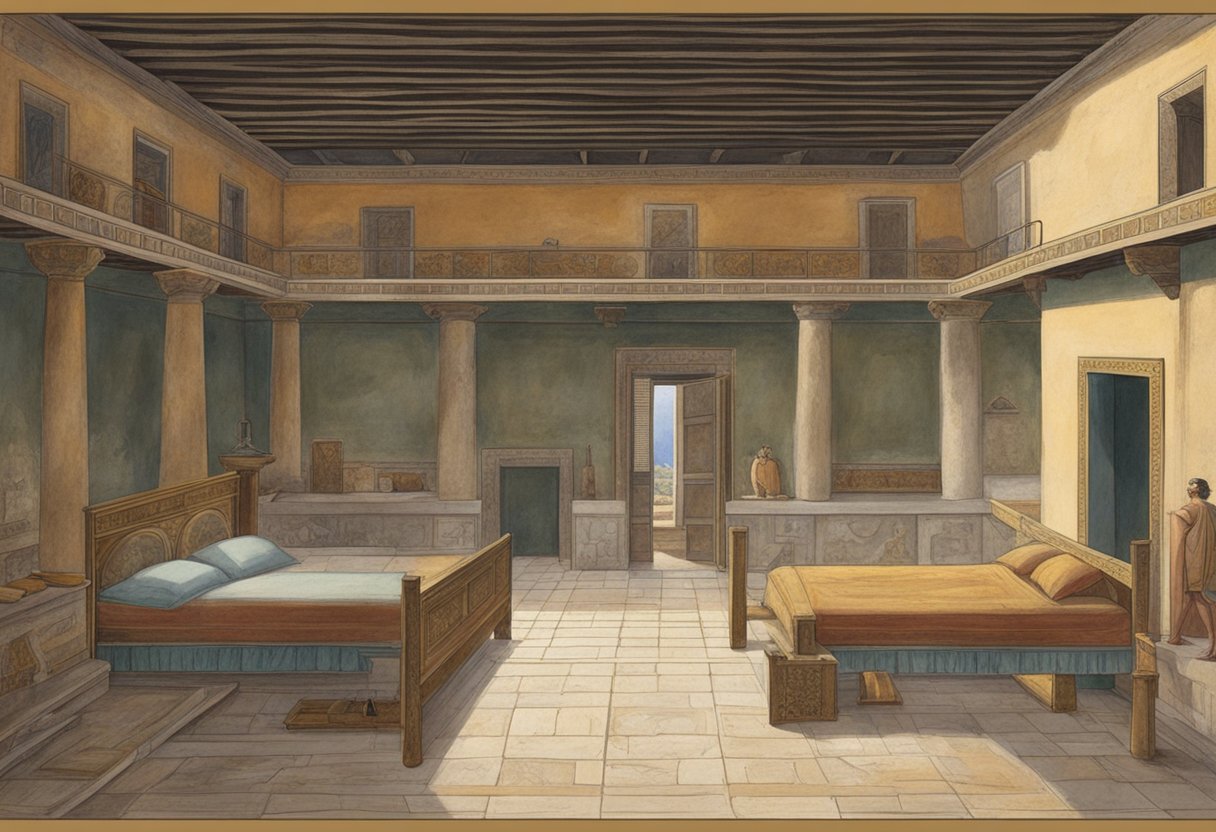
The Lupanar of Pompeii stands as a testament to the advanced architectural planning of ancient Roman cities. Located on Vicolo del Balcone Pensile, the structure’s pragmatic design accommodates its function as a brothel, one of the few such buildings identified with certainty due to inscriptions and explicit frescoes.
Building Layout
The Lupanar consists of a two-story building with a distinct layout that maximizes the use of space.
The ground floor houses a central corridor flanked by a series of small rooms, each furnished sparsely, presumably for the purpose of prostitution.
Above, the second floor—reachable by a now non-existent staircase—mirrored the lower level with additional rooms. The absence of the staircase today is a result of various changes and wear over time.
Rooms and Functions
Each room within the Lupanar was equipped for its intended purpose, typically containing just a bed and a lamp.
Signs etched into the walls and paintings provided both advertisement and explicit indication of the services offered.
The ground floor rooms, more diminutive in size than those above, opened directly onto the corridor, creating an immediate, utilitarian environment. Accessibility and efficiency appear to have been the guiding principles behind the brothel’s interior design.

Comparisons to Other Buildings
When compared to other buildings of ancient Pompeii, the Lupanar is relatively modest both in size and design. Unlike grand public structures or luxurious private homes with intricate frescoes and spacious courtyards, the brothel‘s architecture reflects its commercial functionality.
Nevertheless, it provided insights into everyday life in Pompeii and showcased the Romans’ ability to design buildings tailored for specific urban needs. Visiting the Lupanar’s remnants through resources such as the free media repository and Wikimedia Commons gives a glimpse into the brothel’s former life and into Roman society’s complexity.
Art and Inscriptions
The Lupanar of Pompeii stands out for its remarkable erotic frescoes and the vast array of inscriptions and graffiti that offer deep insights into the social fabric of the ancient city.

Erotic Frescoes
The erotic frescoes within the Lupanar are amongst the most explicit visual records from antiquity, many of which depict various sexual acts. Erotic art was a common feature in the Lupanar and served not only as decoration but potentially as a visual menu for clients.
These images often include figures of Priapus, the god of fertility, emphasizing the connection between sexuality and fertility in Roman culture. In addition, portrayals of Venus, the goddess of love, further reiterate the aspect of desire and beauty.
Graffiti and Inscriptions
The walls of the Lupanar are lined with graffiti, providing an unparalleled glimpse into the personal thoughts and expressions of Pompeii’s inhabitants. These graffiti and inscriptions, often written by the patrons of the brothel, range from boasts and evaluations of the workers’ services to declarations of love.
Phallic imagery is a recurring motif, cementing the Lupanar’s association with sexuality and fertility. The scribbled messages are etched into history, portraying a vivid picture of everyday life and the social dynamics in the ancient city.
The Social Aspect
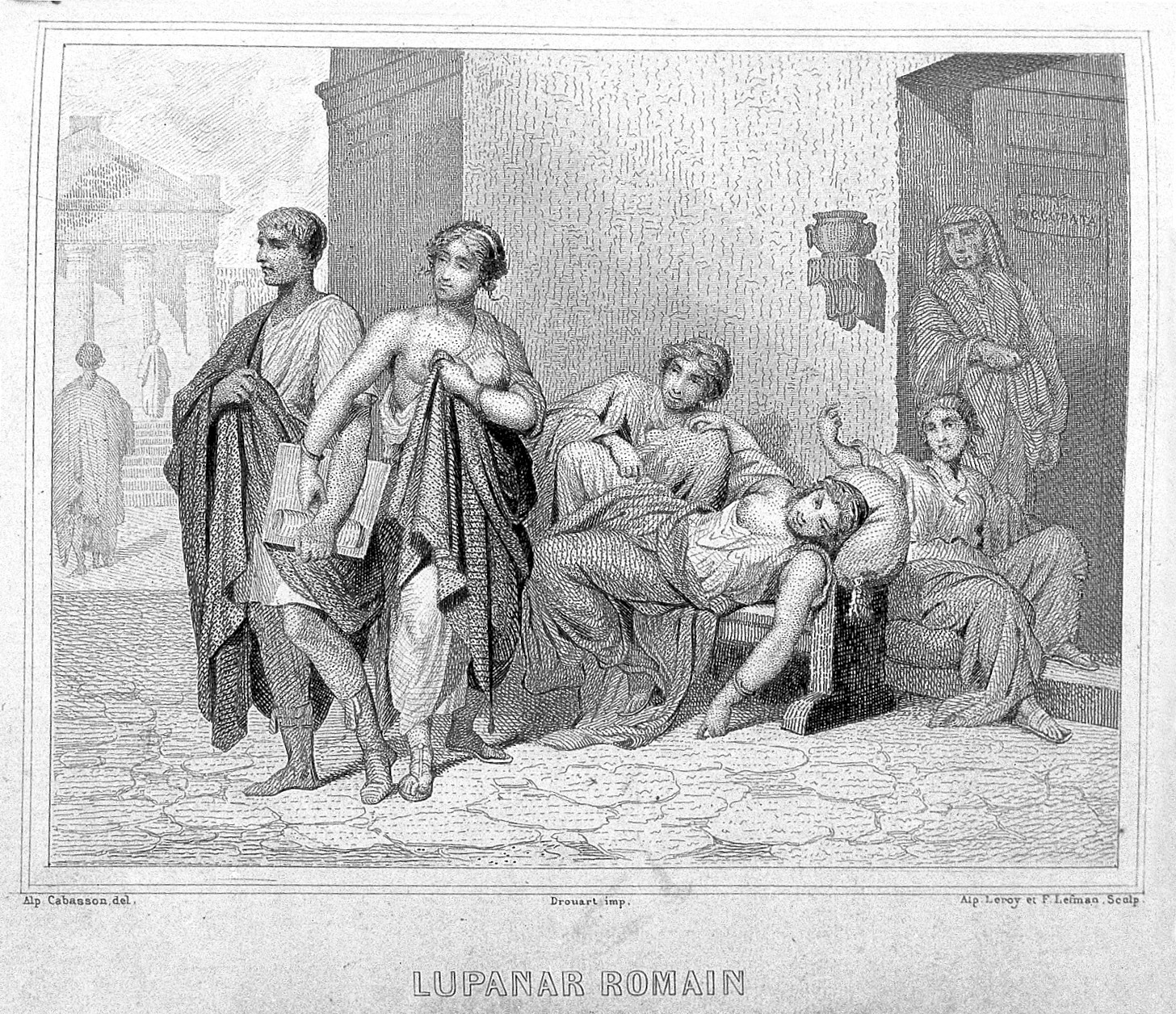
In ancient Pompeii, the Lupanar of Pompeii was not merely a place for physical pleasures but also a hub where social and economic elements of the day coalesced, reflecting the intricacies of Pompeian culture.
Patrons and Gender Roles
Patrons of the Lupanar, largely composed of men from various socioeconomic backgrounds, frequented the establishment driven by desires that were socially accepted in ancient Pompeii. The customers, looking for both sexual gratification and sometimes companionship, often sought out the intimacy that the Lupanar rooms provided.
Gender roles were well-defined, with men fulfilling the role of the seekers of services, while women, and sometimes men, were cast in subservient positions as providers of pleasure. These transactions were not just driven by lust but were also a reflection of a culture deeply influenced by Greek ideologies of love and pleasure.
The Lives of Prostitutes
The existence of prostitutes in the Lupanar ranged from slaves, who were bound by the control of the brothel owner, to freedwomen who engaged in the trade by choice or necessity. These women’s lives were complex and nuanced, often marked by a lack of privacy but also underpinned by their vital position in the fabric of Pompeian society.
The services they provided were a trade-off for sustenance in an economy where few options were available for women in terms of livelihood. Within the brothel’s confine, they navigated their reality, which was a blend of exploitation and the exercise of a certain limited independence, underscored by economic transaction.
Economic Factors
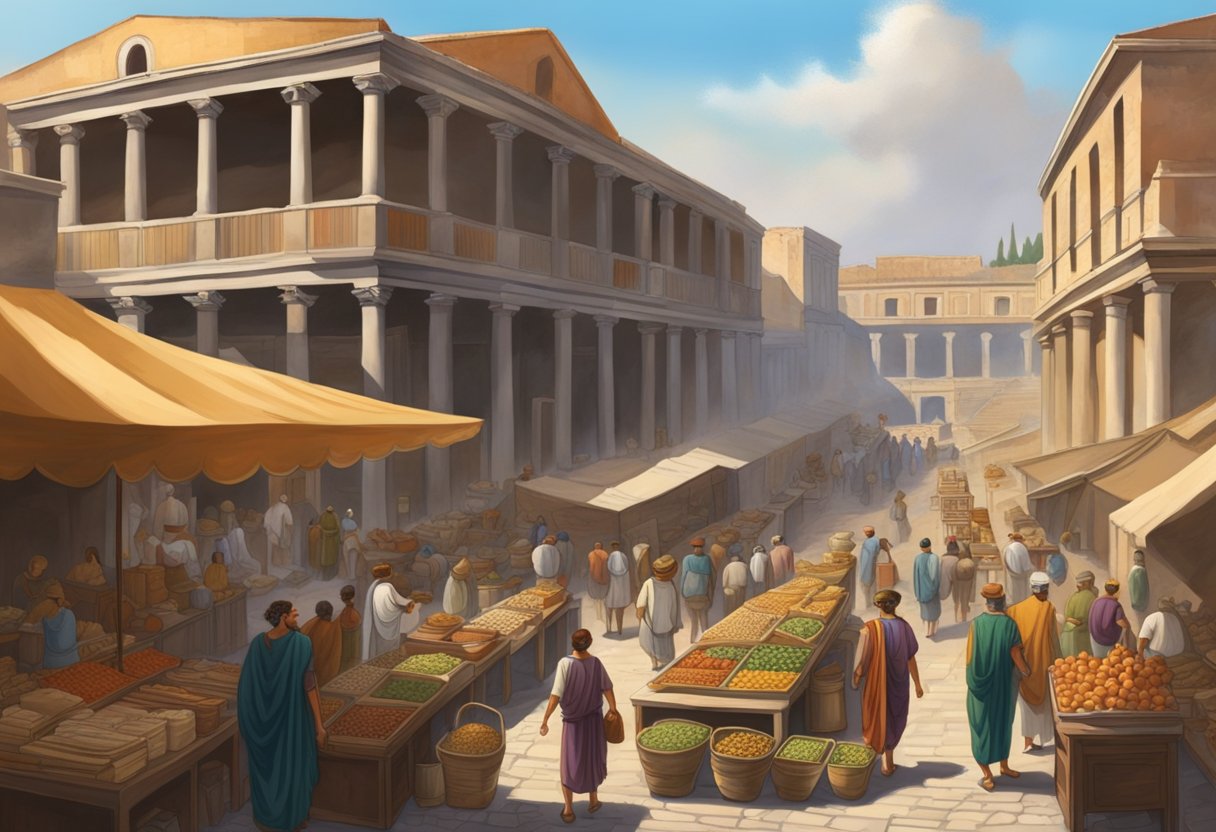
The Lupanar of Pompeii was an economic entity that contributed to the local economy through its provision of paid services. Various sources assess that this establishment operated with a degree of financial sophistication within the broader context of Pompeian society.
The Business of Pleasure
The Lupanar was the largest brothel in Pompeii and is known to have been a profitable venue. The leno (brothel keeper) capitalized on the provision of erotic services, which were in constant demand.
This commercial establishment was strategically placed to attract patrons, ranging from the local population to travelers. Revenue was generated through the payment for services rendered by the workers within the Lupanar.
The income not only supported the maintenance of the establishment but also contributed to the thriving economy of ancient Pompeii. The workers, whose services were a commodity, could be either slaves or freedmen, and they were a part of a systematic, monetized network.
Transaction Methods
In terms of transaction methods, payment within the Lupanar was conducted using sesterces, the standard Roman coin. Patrons would directly pay for the services they desired, and the specific pricing could vary depending on several factors, including the type of service and its duration.
Ancient sources and research such as the Erotic Tokens and The Business of Prostitution study have proposed that token-like objects may have been used within the brothel, potentially as a way to manage transactions smoothly. These tokens represented a prepayment system that could later be redeemed for services, ensuring a controlled and discreet exchange within the lupanare’s economy.
Modern-Day Relevance
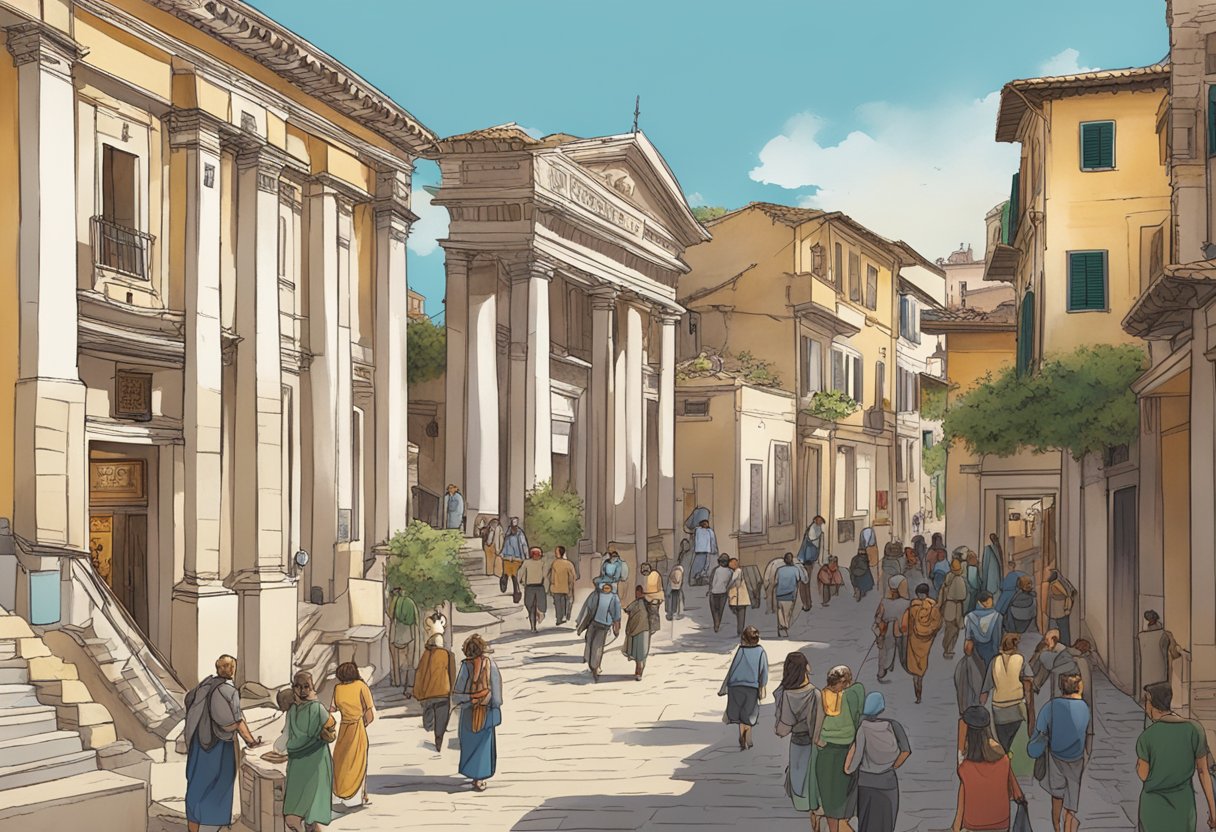
The Lupanar of Pompeii remains a significant site, offering deep insights into ancient Roman society. Ongoing excavations draw a global audience intrigued by its historical value for tourism and educational purposes.
Excavations and Discoveries
Excavations at the Lupanar of Pompeii have unveiled considerable artifacts and architectural features that provide context about life in the ancient city. For example, Prowalk Tours can highlight discoveries such as the infamous erotic frescoes, which shed light on Roman attitudes toward sexuality.
Located on the vibrant Via dell’Abbondanza, the main thoroughfare of Pompeii, ongoing archeological work contributes to our understanding of Roman commercial and social subcategories. Each layer uncovered helps to piece together the behaviors and cultural norms of the time.
Tourism and Education
As a key attraction near Naples, the Lupanar draws thousands of tourists each year. It is not just an insight into ancient vice but also a window into Roman societal structure, with implications for understanding gender roles and economics in antiquity.
Notably, the site functions as an educational resource where visitors can learn about Roman construction methods and urban planning, observing elements like the nearby spa and forum. Additionally, various forms of media have contributed to its popularity, disseminating images and stories that capture public imagination and encourage educational exploration.
Conservation and Controversy
The Lupanar of Pompeii has been the focus of ongoing preservation efforts and has sparked public and academic debate over the approaches to conservation and interpretation of this historical site.

Preservation Efforts
The preservation of the Lupanar of Pompeii has seen significant strides over the years, with archaeological excavations contributing to its upkeep. Rooms in the upper story, as noted by Fiorelli’s Giornale di Scavo, have maintained remarkable structural integrity due, in part, to a past fire that has played a role in their preservation.
These efforts continue to be a subject of interest for historians and conservationists aiming to maintain the integrity of the edifice for future generations.
Public and Academic Debate
Public debate regarding the Lupanar is often centered on the balance between conservation and the site’s accessibility to both scholars and tourists. The theme of debate encompasses ethical considerations concerning the presentation of a brothel as a tourist attraction.
Among archaeologists and historians, discussions debate the proper methodologies of preservation while ensuring the historical authenticity of the site is not compromised. These conversations are critical in determining how best to conserve and manage the Lupanar in a respectful and educational manner.
People Also Ask:
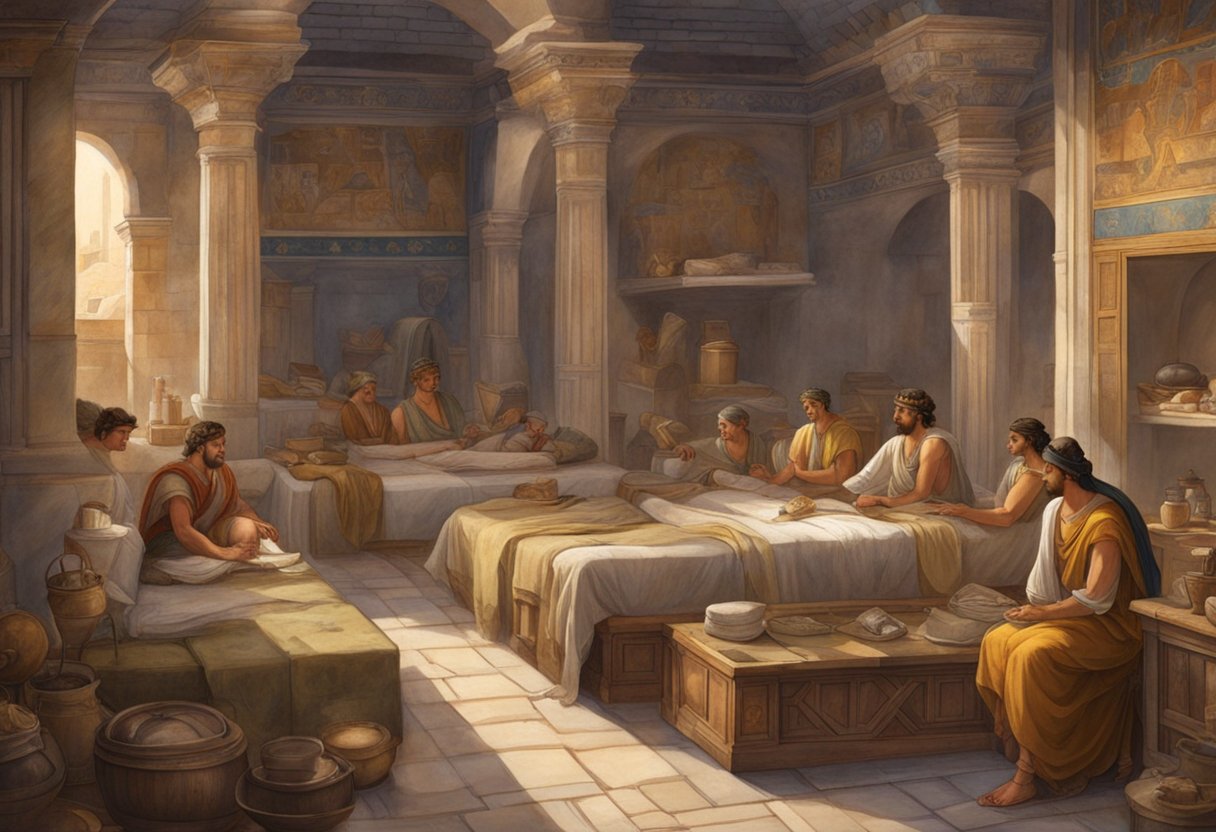
This section aims to address some common inquiries regarding the Lupanar of Pompeii, providing factual information and insights into its historical context.
What types of paintings are found in the Lupanar of Pompeii?
The Lupanar of Pompeii houses a variety of erotic paintings that depict various sexual acts. These frescoes are well-preserved and offer a window into the sexual norms and practices of ancient Roman society.
Can you purchase artifacts from the Lupanar of Pompeii?
It is illegal to purchase or own original artifacts from the Lupanar of Pompeii or any other ancient site in Italy. These cultural assets are protected by law to preserve the heritage and history they represent.
How do the prices of Lupanar of Pompeii artifacts compare to other ancient relics?
As the sale of authentic artifacts from the Lupanar of Pompeii is prohibited, there are no legal market prices available for comparison with other ancient relics.
What are some notable examples of graffiti found in Pompeii’s brothels?
Pompeii’s brothels, particularly the Lupanar of Pompeii, are famous for their graffiti, which includes inscriptions ranging from declarations of love to explicit accounts of sexual encounters. This graffiti gives historians insights into the social interactions and mundane lives of the people who visited these spaces.
What do the frescoes in the Lupanar of Pompeii depict?
The frescoes in the Lupanar of Pompeii mainly depict various sexual acts. They might have served as an erotic menu for clients, indicating the services available within the brothel.
When did archaeologists first excavate the Lupanar of Pompeii?
Archaeologists first excavated the Lupanar of Pompeii in the 19th century. Since then, the site has provided valuable insight into the commercial sex industry of ancient Rome. It has also become one of the most visited areas in the ruins of Pompeii.
